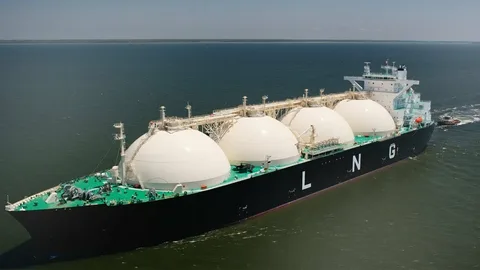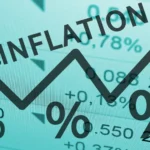LNG trading volumes form the focus of Qatar’s radical master plan to control the global energy space by 2030. The world’s second-largest producer of LNG today, Qatar is now shifting from simply producing to vigorously pushing itself forward in LNG trading volumes. During the Qatar Economic Forum, Energy Minister Saad Sherida Al-Kaabi announced plans to expand QatarEnergy’s trading volume to 30–40 million tons of non-Qatari LNG trading volumes by 2030—a giant leap from the existing 10 million tons. This action is not merely quantitative—it’s a statement of strategic world ambition to redefine the future of LNG trading volumes and cement Qatar as a nimble, preeminent player.
Read More: ADNOCs Awards Dh65.7B Boost to UAE Economy
Strategic Leap: Taking LNG Trading Volumes Across Borders
Qatar’s strategy for taking LNG trading volume past local output is one of infrastructure, international partnership, and shrewd market positioning. Based on over 50% of the 10 million tons now traded being non-Qatari LNG, the objective to reach 30–40 million tons by 2030 has a solid base. By leveraging its trading division, QatarEnergy is fast becoming a world trading behemoth. The nation is geographically poised in a way that uniquely positions it to supply Asia and Europe, leveraging this position to increase LNG trading volumes in both long-term deals and nimble spot transactions. Qatar is not merely a producer anymore—it’s evolving into an international LNG trading volumes hub.
Infrastructure Boom: Fueling LNG Trading Volumes Growth
Qatar is heavily investing in order to make its LNG trading volume aspirations a reality. With current production at 77 million tons, projects like NorthField East and Golden Pass (USA) will more than double capacity to 160 million tons by 2030. These production gains directly support the surge in LNG trading volumes, with QatarEnergy’s fleet growing from 70 to 198 LNG vessels to ensure logistical strength. By not committing all capacity with long-term contracts, Qatar allows more flexibility in LNG trade volumes via spot markets. Couple that with the low-cost production competitive edge, and Qatar’s leadership in LNG trade volume is a fait accompli.
Also Read: G7 Finance Leaders Unite on Global Economic Challenges
Global LNG Trends: Why Qatar Is Doubling Down
With Asia and Europe requiring additional LNG due to population increases, growth of AI, and lower dependence on Russian gas, LNG volumes of trade are increasingly becoming a top metric for energy. Supply in general is expected to increase dramatically by 2025, with North America and Qatar headlining the category. Qatar’s adaptable trading strategy enables improved price discovery and demand match. With constant transactions in China and India, the country is poised to seize fresh demand and dominate the LNG trading volume race. Instead of being afraid of oversupply, Qatar believes that increasing LNG trading volume is the key to ending global energy volatility.
Qatar’s aggressive expansion of LNG trading volume is more than an economic play. It’s a strategic step toward cementing energy dominance for generations. With shrewd investments, adaptability, and a mighty trading strategy, Qatar is not only reacting to market forces—it’s creating them. In the years ahead, the world of energy will turn to Doha not merely as a producer. But as the undisputed hub of LNG trading volume.
For More Trending Business News, Follow Us 10xtimes News






